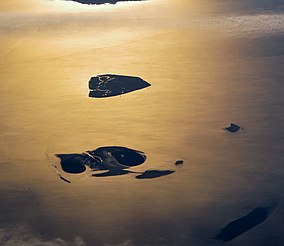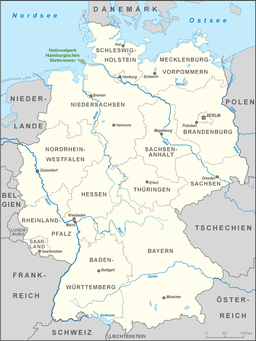Hamburg Wadden Sea National Park
| Hamburg Wadden Sea National Park | |
|---|---|
| Nationalpark Hamburgisches Wattenmeer | |
|
IUCN category II (national park)
|
|

Aerial picture of the Hamburg Wadden Sea National Park, with the islands Neuwerk (above), Scharhörn and Nigehörn (below, appearing as a single island) and parts of the Scharhörn and Neuwerk mudflats (right). Viewing direction is toward the SE.
|
|

Location of the park in northern Germany
|
|
| Location |
North Sea coast, Hamburg, |
| Coordinates | 53°56′07″N 8°28′22″E / 53.935329°N 8.472694°ECoordinates: 53°56′07″N 8°28′22″E / 53.935329°N 8.472694°E |
| Area | 13,750 ha (53.1 sq mi) |
| Established | April 9, 1990 |
The Hamburg Wadden Sea National Park (German: Hamburgisches Wattenmeer) is the smallest of the three German Wadden Sea National Parks which protect the single ecological entity of the Waddensea of Hamburg (UNESCO biosphere reserve) reaching from Den Helder to Esbjerg.
It is an exclave of the city state of Hamburg in North Germany and lies 12.5 km off Cuxhaven in the estuary of the Elbe in the North Sea (German Bight) and includes the islands of Neuwerk, Scharhörn and Nigehörn. It is made up mainly of sand and mixed mudflats with shallow creeks, sand bars (Plaaten) and the aforementioned dune islands.
In accordance with a ruling by the Hamburg Parliament on 9 April 1990 the area was reclassified as the Hamburg Wadden Sea National Park. On 5 April 2001 the law was updated and the national park area expanded as a result.
The total area of the national park (Zones 1 and 2) is 13,750 hectares (53.1 sq mi). The Zone 1 areas are under special protection. Thus, for example mudflat hiking and horse and carriage rides are only permitted on designated routes.
Within the national park there are about 2,000 species of animal, of which about 250 only occur in the salt marshes of the Wadden Sea. Of particular note are the common seal and the gray seal. Due to the natural influx of sediment, there is a high concentration of food for young fish and seabirds at the mouth of the Elbe. The national park is therefore an important resting and moulting area for seabirds.
...
Wikipedia
